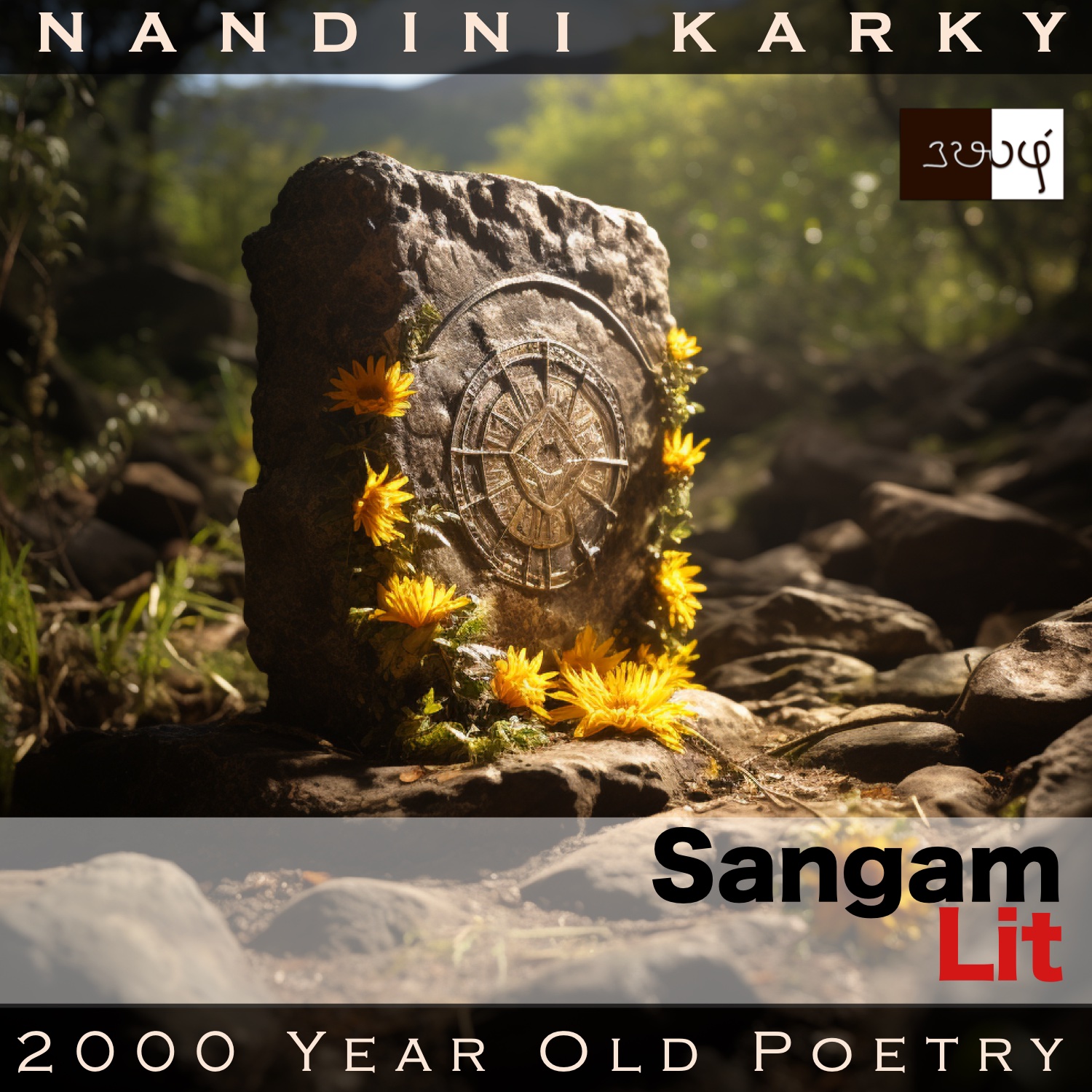Podcast: Play in new window | Download
Subscribe: Apple Podcasts | Spotify | Amazon Music | Android | iHeartRadio | Email | TuneIn | RSS | More
In this episode, we perceive the greatness of a leader, as depicted in Sangam Literary work, Puranaanooru 265, penned by the poet Sonaattu Mukaiyaloor Sirukarunthumbiyaar. Set in the category of ‘Karanthai Thinai’ or ‘cattle recovering’, the verse indirectly talks about the prosperity in the lives of others owing to the presence of a person.

ஊர் நனி இறந்த பார் முதிர் பறந்தலை,
ஓங்கு நிலை வேங்கை ஒள் இணர் நறு வீப்
போந்தை அம் தோட்டின் புனைந்தனர் தொடுத்து,
பல் ஆன் கோவலர் படலை சூட்ட,
கல் ஆயினையே கடு மான் தோன்றல்!
வான் ஏறு புரையும் நின் தாள் நிழல் வாழ்க்கைப்
பரிசிலர் செல்வம் அன்றியும், விரி தார்க்
கடும் பகட்டு யானை வேந்தர்
ஒடுங்கா வென்றியும், நின்னொடு செலவே.
Though it’s another verse about a leader recovering cattle, the way this theme is revealed is different in this one! The poet’s words can be translated as follows:
“In that vast and ancient ground at quite a distance from the village, taking the bright and fragrant flower clusters of the tall and soaring ‘vengai’ trees and weaving these together with palmyra fronds, those cowherds owning many cattle, adorned with garlands many that memorial stone, which you, the lord with speedy horses had turned into! Akin to the thundering sky you stood and supplicants lived in that shade at your feet. Not only the wealth of these supplicants, but also the unceasing victory of garland-wearing, great kings with proud and sturdy elephants, has departed along with you!”
Let’s take a closer look at the words here! The poet starts by talking about an ancient place far away from the village – a burial site. Ancient probably because the people have been burying their dead for generations together there. From the place, the poet moves on to describe the bright yellow flowers of the ‘vengai’ or the ‘Indian Kino tree’ that we have seen a lot in the ‘Kurinji’ or ‘mountainside’ poems of Sangam Aham literature. The poet points to how these flowers are plucked and are being stringed together with palm fronds by cowherds owning many cattle. These cowherds then take that garland and adorn a memorial stone in that ancient burial site, the poet was talking about earlier. Now, the poet addresses a leader, said to have speedy horses, and says he’s the one who has become that very memorial stone!
Reversing in our tracks, we are able to establish that this leader was involved in cattle recapturing because of two reasons. One, he is being worshipped by a tribe of cowherds, and two, they are said to own a lot of cattle. So, it can be understood that this leader went bravely to recapture the cattle that had been stolen from these cowherds and died in the process. Though the story is the same, the way it’s revealed in this verse is unique and leaves a lot to the imagination of the reader. Next, the poet concludes by saying that now that this great man had passed away, not only the wealth of supplicants, who lived in his shade, but also the victory of great kings, who possessed mighty elephants, is now a thing of the past, vanished because of this leader’s loss. And thus, the poet glorifies this leader who had passed away as someone who would be missed by the poor and the rich alike, indicating that this person was compassionate to the former and courageous in defending the latter! Interesting to see how these Puranaanooru poems are not just about mighty rulers, who had conquered and ruled over a huge domain, as most of history normally is, but also gives space to record the greatness of those nameless, minor leaders, hinting that the past is not just about the headlines we get to receive in history books but about much, much more!




Share your thoughts...